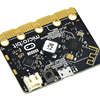Rigid-flex PCB Assembly Electronic Mother Board
Name: Rigid-flex PCB Assembly Electronic Mother Board
Origin: China
Certified: UL, CE, RoHS
Layer count: 1-18 layers
Material: fr4,Tg=135,150,170,180,210,cem-3,cem-1,al base,rogers,nelco
Board thickness: customized
Soldermask color: typically white, for aesthetic purposes
Surface finish: HASL/ lead-free HASL
What does Rigid-flex PCB Assembly Electronic Board exactly?
- The process is known as rigid-flex PCB assembly, when an electronic circuit board is made and assembled using rigid and flexible substrates. A Rigid-flex PCB Assembly Electronic Board is a particular kind of circuit board that combines rigid and flexible components.
- Reliability is increased with rigid-flex PCBs since fewer interconnect and connections exist. The lack of connectors decreases the possibility of loose connections or breakdowns brought on by mechanical stress, vibration, or temperature fluctuations. Furthermore, removing interconnects simplifies assembly, lowering the possibility of human mistakes and enhancing overall dependability.
- This enables it to adapt to the shape of the device or product it is meant for. Numerous sectors, including aerospace, automotive, medical devices, wearable technology, and consumer electronics, use rigid-flex PCB assembly. Compact designs, increased dependability, and increased longevity in challenging settings are made possible by its ability to incorporate rigid and flexible parts into a single board.
The Beneficial Effects of Rigid-Flex Electronic Board Assembly:
Using a Rigid-flex PCB Assembly Electronic Board rather than separate rigid and flexible boards allows for a more compact and space-saving design. By combining rigid and flexible parts, connections and additional wire are not required, reducing the electrical equipment’s total size and weight. It is especially advantageous for gadgets with constrained form factors or space.
- Rigid-flex PCB Assembly Electronic Board can withstand stress, moisture, and temperature better than other materials. The board can tolerate bending, twisting, and other mechanical forces without losing its structural integrity because of the mix of stiff and flexible components. This qualifies rigid-flex PCBs for use in aircraft, automotive, and medical technology industries that demand dependability and long-term performance.
- Signal integrity is improved by utilizing rigid-flex PCBs instead of separate rigid and flexible boards. The continuous electrical connections between the rigid and flexible portions minimize the impedance changes, signal loss, and EMI/RFI problems that might arise with conventional connectivity techniques. As a result, rigid-flex PCBs are appropriate for high-speed and high-frequency applications because of increased signal quality, decreased crosstalk, and greater data transfer rates.
The design flexibility of Rigid-flex PCB Assembly Electronic Board:
- Make sure to carefully consider where components should be placed on the flexible parts of the assembly. Avoid placing heavy or stiff components directly on the flexible parts as they may limit flexibility and lead to stress spots. Instead, place these parts on the assembly’s rigid parts. Set an acceptable bend radius for the assembly’s flexible parts. This is the smallest radius that a flexible material may safely bend without damaging itself.
- To avoid failure or breaking during bending, ensure the bend radius exceeds the minimum advised for the selected flex material. Three-dimensional (3D) designs and the capacity to adapt to non-flat or curved surfaces are made possible by combining rigid and flexible components. This makes it feasible to create electrical devices that are unique and small, which was difficult or impossible to do with separate rigid and flexible boards in previous times.






